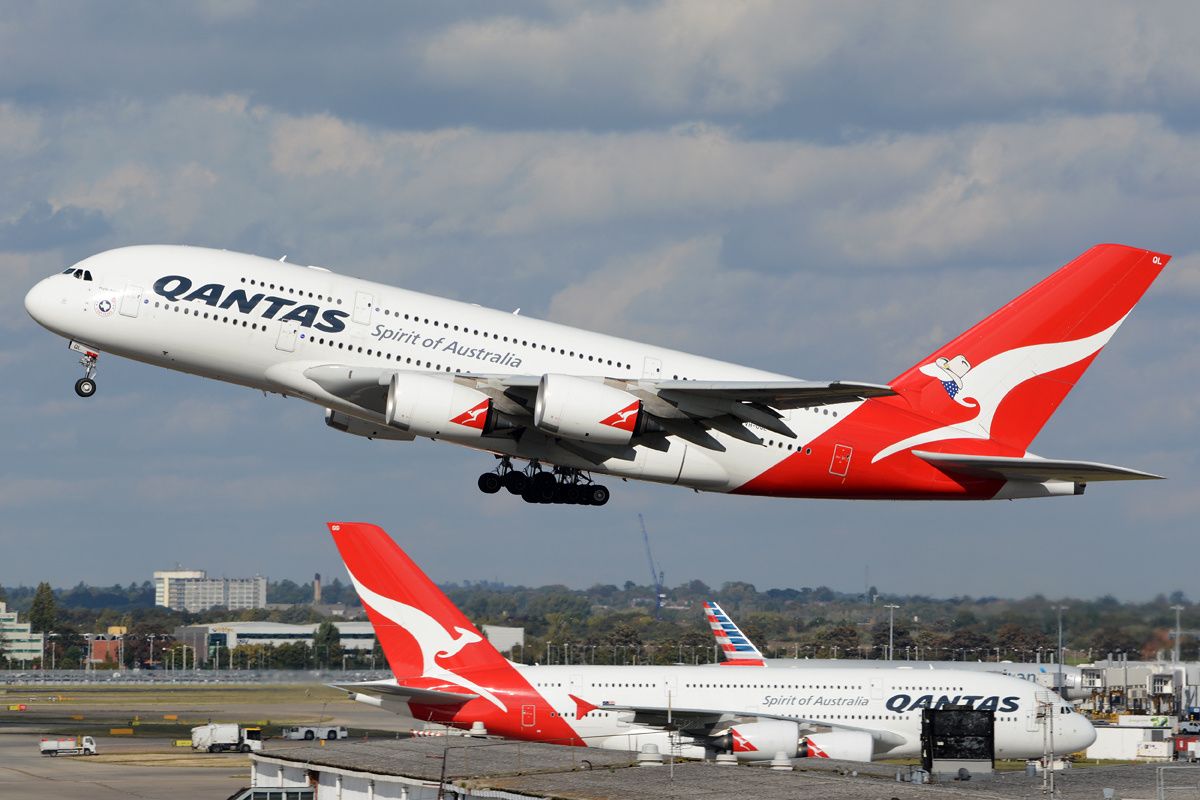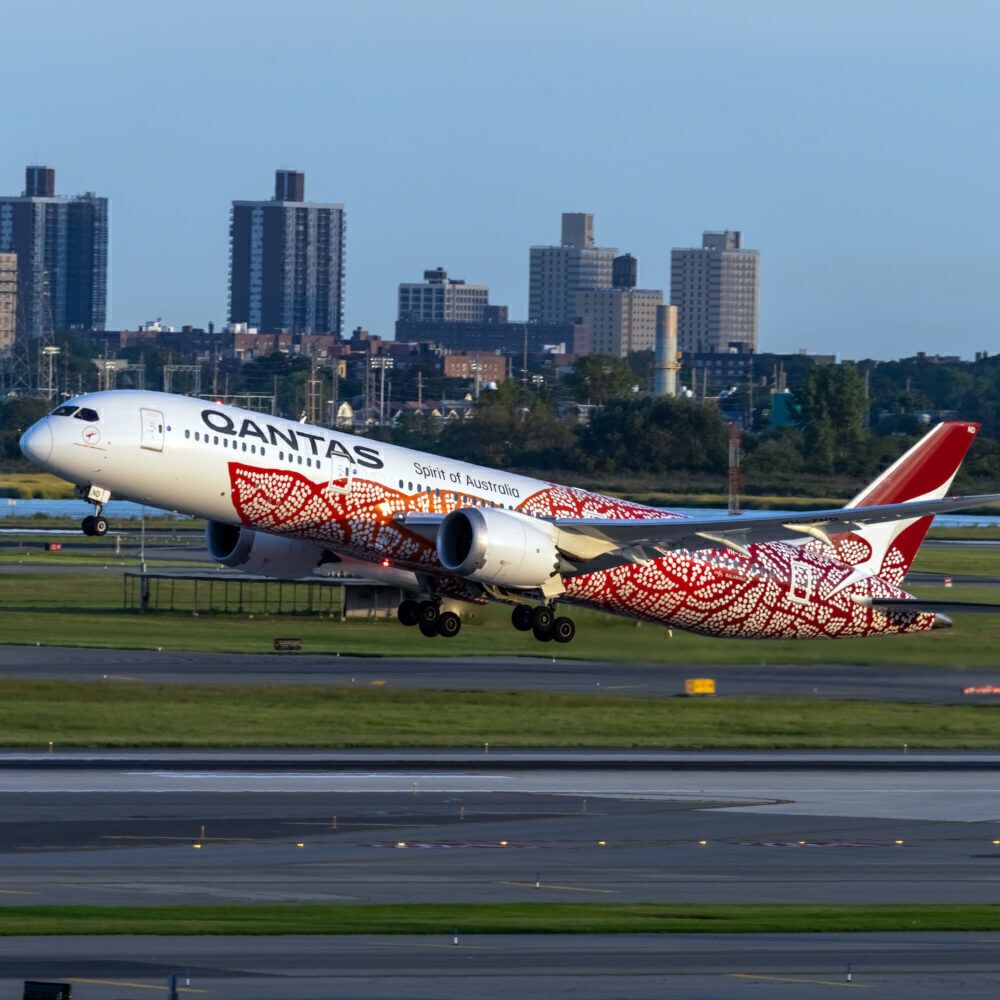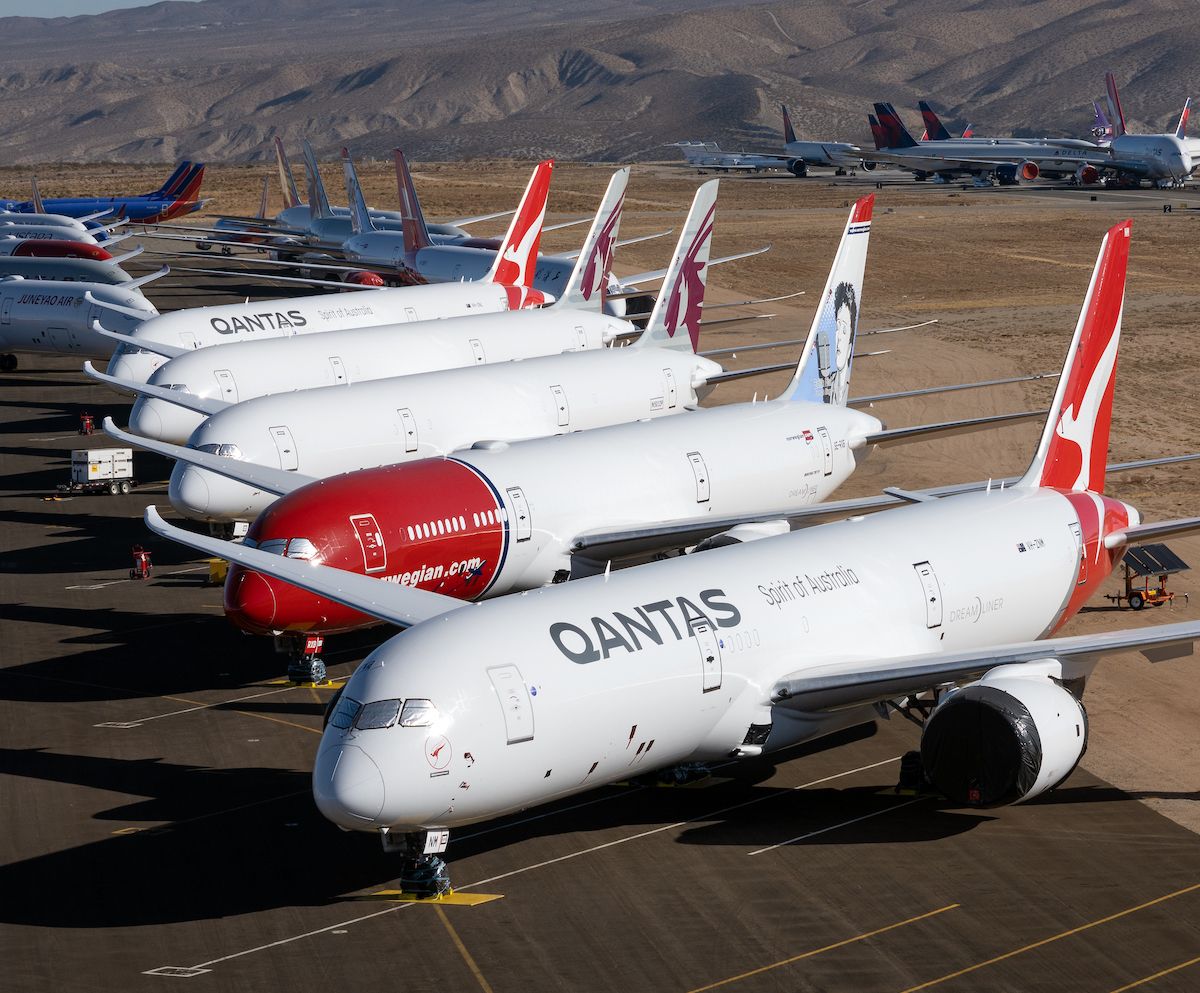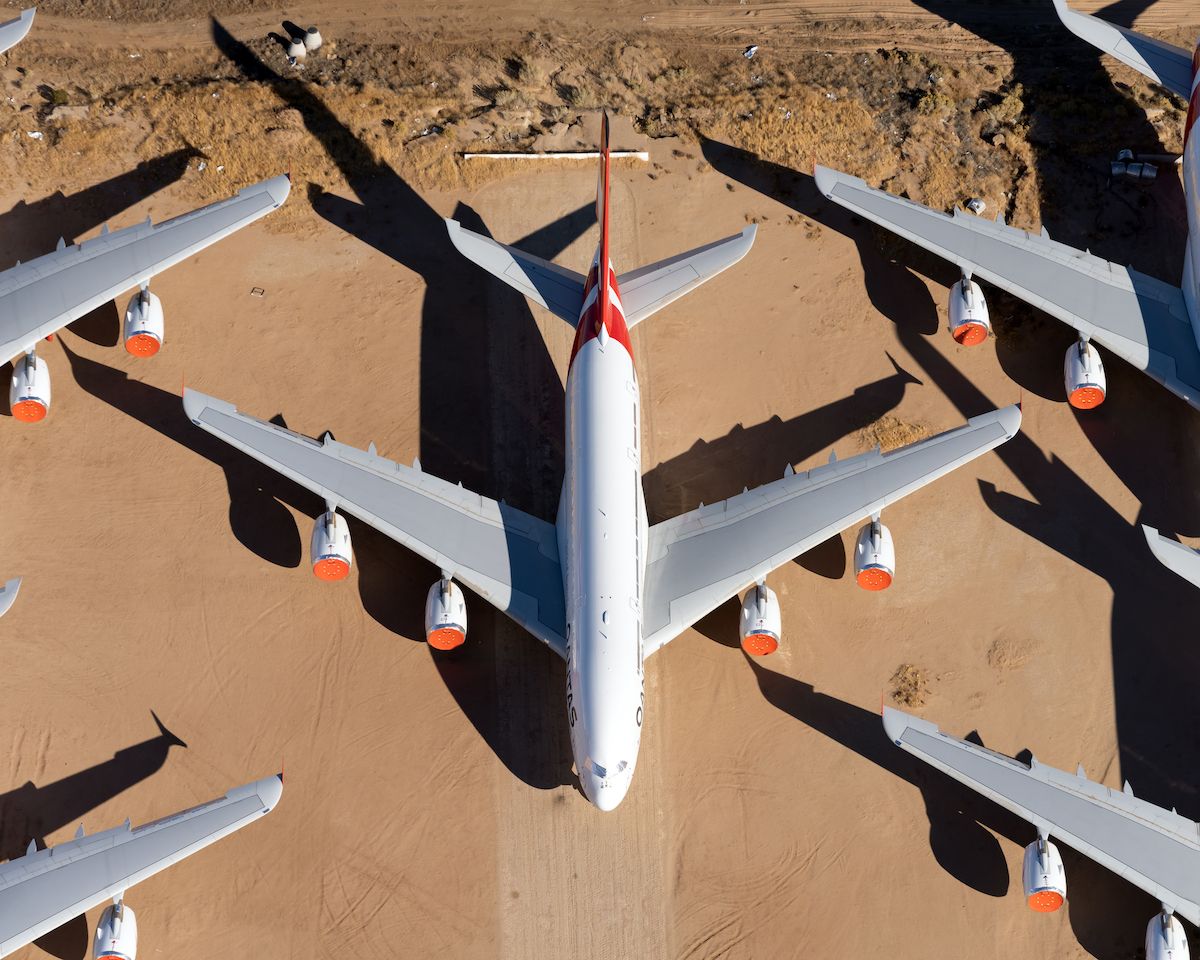The flag carrier of Australia, Qantas operates a mainline fleet of nearly 130 aircraft. Roughly 60% of this collection consists of the Boeing 737-800 with the remainder comprising a mix of Boeing and Airbus widebodies - including the behemoth Airbus A380 superjumbo. In recent years, Qantas has waved goodbye to its iconic Boeing 747-400s, and will, in the years to come, welcome the Airbus A350-1000, A321XLR, and Airbus A220 into its fleet. But today, let’s take a look at the Qantas fleet in 2022…
Mainline fleet only
Starting off, it’s important to note that we will only really go in-depth with the carrier’s mainline fleet. As a result, we won’t be looking too closely at the airline group’s regional brand, QantasLink nor its budget subsidiary, Jetstar.
We can say, however, that aircraft flying under the QantasLink brand are a diverse mix - including the Airbus A320, Boeing 717, De Haviland Canada Dash 8, Embraer E190, and Fokker F100. While QantasLink is obviously just one company and brand, the aircraft flying under this livery are actually operated by a number of different firms. These include Network Aviation, National Jet Systems, Sunstate Airlines, and Eastern Australia Airlines. These air operators and their smaller aircraft operate domestic services, connecting Australian communities while feeding the medium and long-haul international network of the Qantas mainline brand.
The Boeing 737-800
When it comes to the Qantas mainline fleet, let’s begin with the carrier’s 75 Boeing 737-800s. Delivered from 2002 to 2014, the average age of this sub fleet now stands at 14 years. The oldest of these narrowbodies is 20 years. In fact, about 15 737s are at or nearing the 20-year mark. The youngest of these aircraft are somewhere between seven and a half to eight years of age.
Not only is the Qantas narrowbody fleet extremely homogenous, but the seat configuration is the same across all 75 Boeing 737-800s. This consists of 174 seats, broken down into 12 seats in business class, and 162 in economy. As is common with many legacy carriers, except perhaps Singapore Airlines, the business class of these 737s consists of recliner style seats in a 2-2 layout, while economy class sees the standard 3-3 pattern.
According to the airline, its Boeing 737s operate across the majority of Australian domestic routes. The airline also adds the following on its website:
“If you're located in Australia and traveling between our South Pacific and Oceanic destinations such as New Zealand, Denpasar, Papua New Guinea, New Caledonia you’ll enjoy the journey onboard one of our Boeing 737s.”
The airline has made a tentative decision on which aircraft will replace these 737s as they age out of service. However, that’s something we’ll have to cover closer to the end of this article.
Airbus A330-200s
Making the big leap up to the next size of aircraft, we have the Airbus A330-200. Qantas operates 18 Airbus A330-200s, which have an average age of 14 years. There is a little bit of variety in seating configuration for this sub fleet.
- Eight of these A330-200s are configured with 255 seats- 27 in business class and 228 in economy.
- The other 10 -200s have a higher density layout with 271 seats. 28 of these are business class seats while the remaining 243 are in economy class.
The lower-capacity aircraft are configured this way in order to fly longer-range missions, such as from Brisbane to Los Angeles and (occasionally) Melbourne to Los Angeles. As we covered in a recent Simple Flying article, these A330s haven’t been traditionally operating such long flights - flights that have been known to last 13 hours or more.
Indeed, it was only late last year that transpacific services began with the A330-200. This was a result of Qantas working with Airbus to increase the aircraft’s certified maximum take-off weight in order to carry more fuel. One downside of this change is that the A330s reportedly don't come with the exclusive crew rest areas seen on other long-haul aircraft.
With no dedicated crew bunks available on these A330s at the moment, Qantas flight attendants were spotted setting up camp in the main economy class cabin. On at least one particular flight, blanket forts were set up across rows of economy class seats. Reports indicate that there was a technical problem that prevented the cabin lights from being dimmed.
Qantas reported that it is working to install privacy curtains across some banks of seats on these aircraft to improve conditions for flight attendants. However, supply chain issues have been cited as a factor preventing those curtains from being installed. This whole "blanket fort situation" has certainly provided the airline with a fair bit of negative media coverage, with the Flight Attendants’ Association of Australia highlighting the challenging working conditions faced by its members.
Things are a little less interesting when it comes to the carrier’s Airbus A330-300 sub fleet. There are 10 of these aircraft, which have an average age of just under 18 years. The reduced range of these jets - when compared to the -200 - means that their services are mostly limited to the Asia-Pacific region.
Indeed, Delhi to Melbourne appears to be the furthest these aircraft have been flying recently - with a flight duration of 11 to 11 and a half hours. It should be noted, however, that with this service, the aircraft makes a stop in Adelaide on its journey west. Sydney to Honolulu, Sydney to Shanghai, and Melbourne to Singapore are some other lengthy services operated by this A330 variant.
The Boeing 787-9 Dreamliner
Moving over to the Boeing side, Qantas has 11 Boeing 787-9s with an average age of just over three and a half years. The airline has additional Dreamliners on order - but this was initially postponed due to pandemic, and now is likely postponed due to Boeing delivery delays.
In December 2005, the airline committed to firm orders for 45 Dreamliners, with options for an additional 20. On top of this was purchasing rights for an additional 50 787s. The deal would see a number of 787-8s go to Jetstar while an unspecified quantity of 787-9s would go to Qantas. Numbers would shift over the years, and in 2009, the carrier canceled orders for 15 787s, citing significant changes to the global economic environment.
Three years later, in 2012, Qantas would reduce its order by an additional 35 jets. The reason for this move was cited as delivery delays and losses on international routes. If you’re doing the math, the number of canceled jets up until this point would be 50- which is more than the firm commitment for 45 aircraft. Thus, we would assume that some of the canceled 787s were options.
At this point in 2022, Qantas as a group has 22 787s - 11 787-8s fly with JetStar while the other 11 are 787-9s flying for Qantas. Additionally, data from ch-aviation.com notes that there are only three more 787s left to be delivered to Qantas.
These jets were meant to be delivered sometime over the past two years. However, like other carriers around the world, two major factors have postponed Dreamliner deliveries.
In May 2020, we reported that Qantas told Airbus and Boeing that it would not be accepting any aircraft deliveries for the year, pushing new arrivals until 2021. In 2020, Qantas had been due to receive the three 787s for its mainline fleet and a single Airbus A321LR for JetStar.
As you may have already guessed, the new 787s would not arrive in 2021 either. This was due to Boeing’s ongoing issues with 787 production being worked out with the FAA. Interestingly, these three jets have actually already been built, having had their respective first test flights in September, October, and November of 2020. Therefore, by the time these "brand new aircraft" are delivered to Qantas, they will all likely be at least two years old.
Still flying the Airbus A380
Moving on to Qantas’ biggest birds, the Australian airline has a total of 12 Airbus A380s with an average age of just under 13 Years. Qantas was among the first airlines in the world to order the superjumbo. The then-CEO James Strong signed for the aircraft in November 2000, back when the double-decker quadjets were still known by their codename, the A3XX.
"We are delighted to see Qantas becoming not only an Airbus customer but also a launch customer for the all-new A3XX," noted an Airbus press release. The statement went on, saying:
"When it enters service in 2006, the A3XX will bring new standards of flying to the whole world. It will introduce wider seats and a more spacious cabin for all passengers, as well as 15-20% lower operating costs per seat than today's largest competing airliner."
Envisioning future growth and travel demand, the airline boosted its A380 commitment from 12 to 20 A380s in 2006, even before taking delivery of the aircraft. As with many clean-sheet aircraft programs, the A380 would enter service behind schedule. Instead of a 2006 first delivery, Qantas took its first A380 in September 2008.
Unfortunately for Airbus, this confidence would not last. In 2019, Qantas would cancel its commitment for eight A380s. Qantas said in a statement that it would instead upgrade its existing 12 A380s. In retrospect, considering the devastating impact of a once-in-a-century pandemic, the airline made the right decision.
All 12 of the airline’s A380s have spent well over a year in long-term storage. Most went to a facility in Victorville, California while two were housed at Qantas’ purpose-built A380 hangar at LAX. In January 2022, the airline would begin to resume international A380 service with one of the first commercial flights taking passengers from Los Angeles to Sydney.
Although we reported that the airline’s 4th A380 had left storage, just two superjumbos are currently listed as active. Hopefully, this number increases over the course of 2022!
The past and the future
Sadly, one aircraft type no longer being flown by Qantas is the Boeing 747. Between 1971 and 2020, Qantas operated scores of Boeing 747s, ranging from 747 SPs to 747-400s. Sadly, the pandemic brought the 747’s service life to an early end for Qantas, with the airline sending its last 747-400, VH-OEJ Wunala, off to California in July of 2020.
But when it comes to the future of the Qantas fleet, there are two notable things to look forward to. The first has to do with the airline’s future widebody fleet. In December 2019, Qantas selected a modified version of the Airbus A350-1000 to operate Project Sunrise flights.
Under the flagship plan, the airline would fly primarily from Sydney nonstop to faraway cities like London and New York. On May 1st, 2022, the project was officially revived with Qantas CEO Alan Joyce making the announcement in Sydney alongside a prototype Project Sunrise plane, an A350-1000 featuring Qantas livery. From 2025, a fleet of 12 Airbus A350-1000s will fly nonstop from Australia's east coast to London and New York.
Also fairly recently, December 2021 saw Airbus secure a tentative order from the carrier for 40 aircraft: 20 A321XLRs and 20 A220s. With the options on the table, Qantas will potentially take 134 new narrowbody Airbus aircraft over a ten-year delivery period. This order was firmed up on May 1st along with the A350 announcement.
“This is a long-term renewal plan with deliveries and payments spread over the next decade and beyond, but the similarly long lead time for aircraft orders means we need to make these decisions now," said Qantas CEO Alan Joyce said at the time. The order will allow Qantas to begin replacing its domestic Boeing 737-800 workhorse aircraft while the A220 order will see QantasLink's Boeing 717-200s also phased out.
With the way things are going, it looks like the Australian carrier is moving more and more towards Airbus. Hopefully, in the short term, however, the carrier will eventually get its remaining A380s back in service and the remaining three 787s delivered.
What do you think about the current Qantas fleet and the direction that it’s going? Share your thoughts and opinions by leaving a comment!



.jpeg)
.jpeg)
.jpeg)


.jpg)